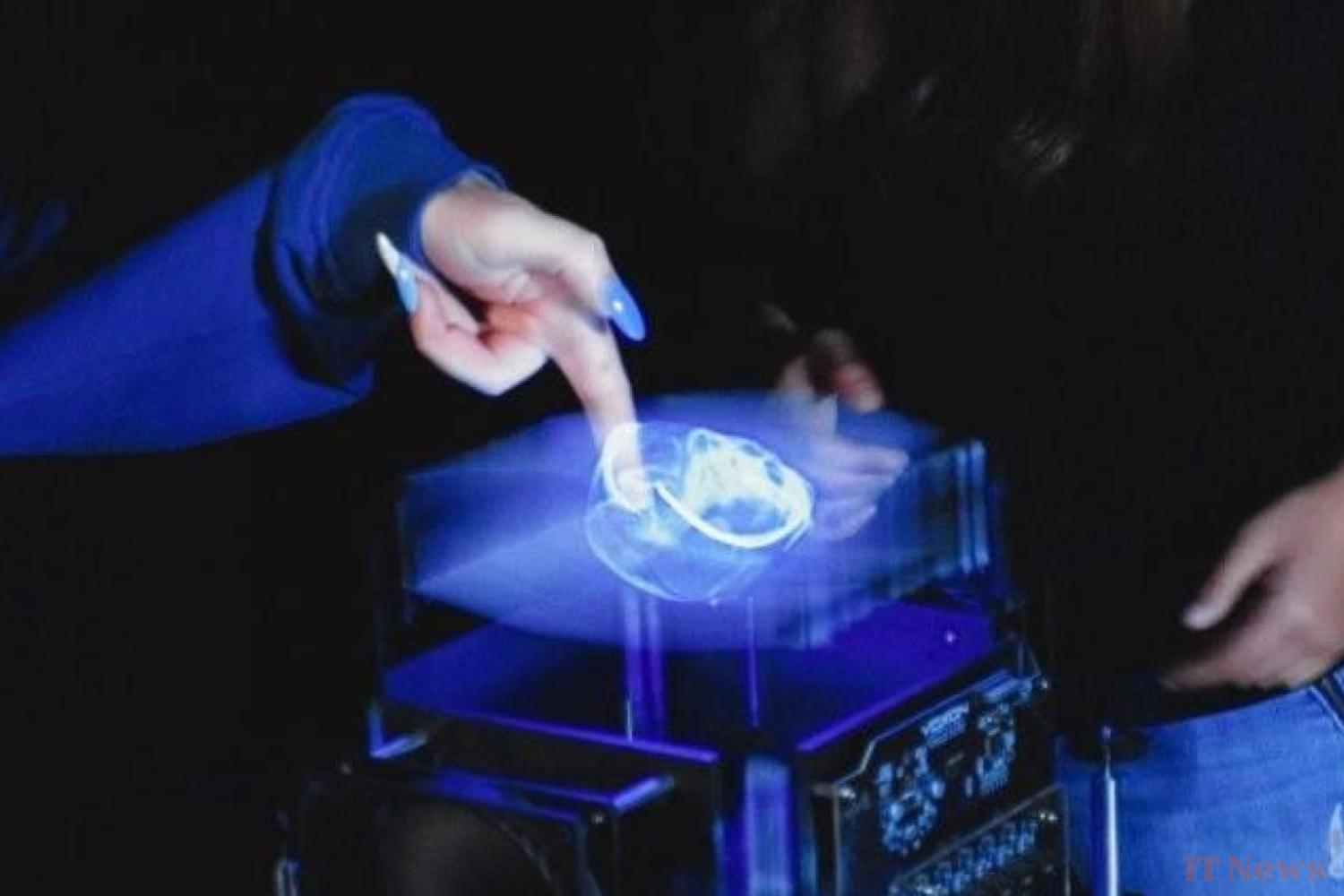Spanish researchers have just presented an impressive proof of concept: they have designed the very first holographic display system that can be touched and manipulated.
Holograms are a classic of science fiction, where they often serve as a means of communication or control system. But at present, these floating three-dimensional images are still quite far from what we find in works like Star Wars.
A complex technology
What we call light is in fact a particular form of electromagnetic wave. This wave propagates in very specific patterns, which depend in particular on the shape and texture of the object it bounces off. These patterns are represented in what is called the wavefront, a surface that represents the points where the light has the same phase at a given moment. In practice, creating a hologram therefore amounts to recreating the front of a light wave that has "touched" an object.
To record it, a second reference light wave is used which, when it encounters the wave coming from the object, generates interference. This can then be used as an indirect representation of the object; from there, by combining several lasers in a very specific way using different mathematical models, the original wavefront can be reconstructed, so that our eyes perceive it as a reconstruction of the object in three dimensions.
The problem is that this technique requires capturing the interference patterns with extremely high resolution, which is difficult to achieve in practice. Most real holograms are therefore small and confined to research laboratories that have cutting-edge optical equipment.
And the complexity of the problem increases even more exponentially when it comes to interacting with these holograms. To hope to manipulate them, an even more sophisticated optical system must be designed. It must also be supported by a computer powerful enough to solve numerous complex equations in real time, such as the famous Fourier transforms. This explains why the rare commercial holographic projectors like those from Voxon or Brightvox, which, while very impressive, are limited to relatively small, rather low resolution, and non-interactive holograms.
The first interactive holograms
This is where the authors of this new study come in. They designed a pseudo-holographic system that does not allow an image to appear in the middle of an empty space, but still offers the possibility of manipulating it in real time.
To build this system, the researchers recycled the concept of a volumetric diffuser. This term refers to a system that relies on retinal persistence—the phenomenon whereby images take about 1/18 of a second to disappear after being projected onto the retina. This persistence can be exploited by projecting an image onto a surface that oscillates very quickly. This creates many different "layers" of light, which the brain interprets as a complete 3D representation of the object.
The problem is that diffusers of this type are generally rigid. It is therefore impossible to interact with the image; inserting a finger into the space where it appears would block the diffuser, preventing the three-dimensional image from forming. The team therefore designed an extremely thin and, above all, elastic diffuser, which deforms instead of stopping or breaking when it encounters another object.
The difficulty is that this approach radically changes the way we approach image projection. Since the surface deforms, this projection must also be adjusted in real time so that it remains consistent with the diffuser's surface. This step required the most work for the researchers, who had to model the surface's behavior with great precision to correct the final image. But these efforts paid off: at the end of the process, they obtained the world's first interactive volumetric diffuser, which allows, for example, the object's representation to be rotated by pinching it.
Real concrete applications
Admittedly, the system remains rather crude—it must be admitted that the result is quite far from what is generally described as a hologram. But it is nevertheless a very interesting first step which, once refined, could still have a concrete interest—even in its current form.
The authors propose, for example, using it for educational purposes. A trainee mechanic could use it to visualize the assembly of an engine, while a surgical student could directly manipulate an anatomical representation of a patient. The team also cites museums, where this type of device could offer visitors a new way to observe objects too precious to be displayed in the open air.
While waiting for true free and interactive holograms to appear, it will be interesting to see if this technology manages to find a small place for itself in one of these fields.
The text of the pre-print study is available here.



0 Comments